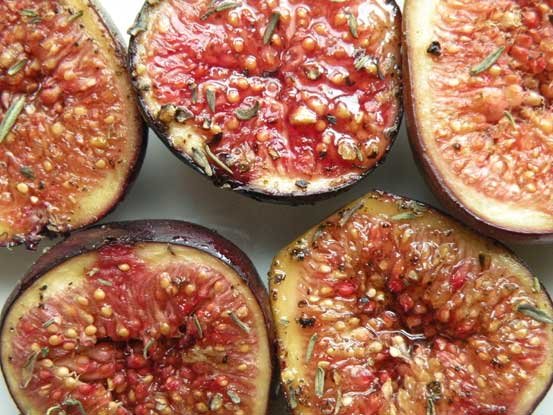Welcome to the flavorful world of smoked meats. This age-old cooking method transforms simple cuts into tender, smoky delights.
Imagine the aroma of hickory or oak-infused smoke gently swirling around a choice brisket or pork shoulder. The art of smoking meat is an adventure that can elevate your culinary skills and impress your friends and family with mouth-watering dishes.
Our step-by-step guide is your trusted companion on this savory journey. Whether you’re a seasoned grill master or a curious beginner, this guide promises to walk you through the essentials of meat smoking. From selecting the right wood to mastering temperature control, we cover it all with easy-to-follow steps. Dive into the world of smoked meats, and let’s turn that backyard barbecue into a celebration of taste!
Introduction To The Art Of Smoking Meat
Welcome to the world of smoking meat. This guide shows you how. Smoking meat is an art. It takes time and skill. But, the result is worth it. Smoky flavors and tender meat await. Let’s dive into the basics and more.
The Rich History Of Smoke Cooking
Smoking meat is old. Very old. People did it thousands of years ago. They found it keeps meat good for longer. It also makes it taste better. Different cultures have their own ways. But all share a love for the smoky flavor.
Health And Safety Tips Before You Begin
Before starting, know this. Safety is key. Always check your smoker. Make sure it’s clean. Use the right wood. Some woods can be bad for health. Keep meat at safe temperatures. This stops bad bacteria. Enjoy smoking meat, but stay safe.

Selecting Your Smoker
Embarking on the smoking meat journey starts with a key choice: the smoker. This step impacts flavor, ease, and smoking success. Understanding smoker types and features ensures a wise pick. Let’s dive in.
Types Of Smokers: Pros And Cons
Different smokers suit different needs. Consider these common types:
- Offset Smokers: Ideal for traditional smoking, they offer rich flavor but require skill.
- Electric Smokers: User-friendly with consistent temperature, perfect for beginners.
- Pellet Smokers: Combine ease of electric with wood-fired taste; they are versatile but pricey.
- Kettle Grills: Great for grilling and smoking, they’re budget-friendly but have less space.
- Drum Smokers: Simple design, effective for slow cooking but with fewer features.
- Gas Smokers: Convenient and easy to control, yet the flavor may not match wood-fired units.
Key Features To Look For
Focus on these features when choosing your smoker:
| Feature | Importance |
|---|---|
| Temperature Control | Essential for consistent smoking, look for precise adjustments. |
| Build Quality | Thick materials retain heat better and ensure durability. |
| Size & Capacity | Match the smoker size to your usual crowd and space. |
| Accessibility | Easy access to food and fuel aids in hassle-free smoking. |
| Ventilation | Proper airflow is crucial for smoke circulation and flavor. |
| Price | Balance your budget with the features you need most. |
Essential Tools And Accessories
Essential tools and accessories make smoking meat easy and enjoyable. Quality equipment leads to delicious outcomes. Here’s what you need:
Must-have Smoking Accessories
- Smoker: Choose a type that suits your needs.
- Wood Chips or Chunks: These add flavor to your meat.
- Meat Claws: Perfect for handling and shredding meat.
- Grill Gloves: Protect your hands from heat.
- Aluminum Foil: Wraps meat and retains moisture.
- Cleaning Tools: Brushes and scrapers keep your smoker clean.
Thermometers And Temperature Control
Temperature is crucial in smoking meat. Thermometers help monitor it. Look for:
| Type | Use |
|---|---|
| Instant-Read Thermometer: | Quick temperature checks. |
| Probe Thermometer: | Continuous monitoring. |
| Wireless Thermometer: | Monitor from a distance. |
Control the heat with vents, water pans, and dampers. Keep temperatures steady.
:max_bytes(150000):strip_icc()/101621100_preview-ce6e5d87a8c0457caa94ec9211e93e3a.jpg)
Choosing The Right Meat
Choosing the right meat is key to successful smoking. Not all cuts smoke well. Understanding which types work best will ensure a delicious outcome. Let’s dive into the best cuts for smoking and how to prepare them.
Best Cuts For Smoking
Some meats smoke better than others. Beef brisket, pork shoulders, and ribs are top choices. They have enough fat to stay moist during long smokes. Here are the best cuts:
- Beef Brisket: Tough but becomes tender after smoking.
- Pork Shoulder: Perfect for pulled pork. Juicy and flavorful.
- Ribs: Pork or beef. Both smoke well and taste great.
Preparing Meat For Smoking
Preparation is simple but important. Start by choosing fresh meat. Look for cuts with even fat distribution. Trim excess fat but leave enough for flavor.
Next, season the meat. Use salt and your favorite spices. Let it rest in the fridge for a few hours. This process helps the flavors sink in.
- Choose fresh meat.
- Trim excess fat, leave some for moisture.
- Season with salt and spices.
- Rest in fridge to enhance flavor.
Proper preparation makes a big difference. It ensures the meat is ready to absorb all the smoky goodness.
Understanding Woods And Flavors
Understanding Woods and Flavors is crucial in the art of smoking meat. Different woods impart unique tastes. Choosing the right wood ensures a flavor that complements the meat. Let’s explore how to select the best woods for a delicious smoke.
Types Of Wood For Different Flavors
Selecting wood is like picking a seasoning. Each type adds a distinct taste. Here’s a quick guide:
- Hickory – Offers a strong, bacon-like flavor.
- Apple – Provides a sweet, fruity taste.
- Maple – Delivers a mild, sweet flavor.
- Mesquite – Gives a bold, earthy aroma.
- Cherry – Infuses a mild, fruity tang.
- Oak – Known for its medium smoky flavor.
- Pecan – Imparts a rich, buttery taste.
Pairing Wood With Meats
Different meats work well with specific woods. Here’s a simple pairing chart:
| Meat Type | Recommended Wood |
|---|---|
| Beef | Hickory, Mesquite, Oak |
| Pork | Apple, Cherry, Hickory |
| Chicken | Apple, Cherry, Pecan |
| Fish | Maple, Alder, Oak |
| Lamb | Mesquite, Oak, Cherry |
Match the wood flavor with your meat for the best taste. Remember, the right wood can make all the difference.
The Smoking Process
Mastering the art of smoking meat brings flavor and joy to any meal. Let’s dive into the smoking process. We’ll break it down, step by step.
Setting Up Your Smoker
First things first, get your smoker ready. Follow these simple steps:
- Choose your smoker type. Options vary from electric to charcoal.
- Prepare your wood chips. Soak them in water for about an hour.
- Preheat the smoker. Aim for a steady 225°F (107°C).
- Place the meat. Set it on the grates away from direct heat.
Patience is key. Let the smoker do its work.
Controlling Smoke And Temperature
Consistency is crucial for perfect smoked meat. Keep these tips in mind:
- Monitor the temperature. Use a thermometer for accuracy.
- Adjust vents. Control the smoke flow and maintain temperature.
- Check the wood chips. Add more as needed to keep the smoke steady.
- Avoid opening the smoker. Each peek can lower the temperature.
Remember, good things take time. Smoking meat is no different.
Mastering Meat Smoking Techniques
Smoking meat is an art and a science. To get that perfect flavor and tenderness, you need the right techniques. Let’s dive into the low and slow method and the Texas crutch. These are two key steps in smoking that can make a world of difference. Ready to learn? Fire up the smoker, and let’s get started!
The Low And Slow Method
Patience rewards you when smoking meat. ‘Low and slow’ is the golden rule. Aim for a temperature range between 225 and 275 degrees Fahrenheit. This gentle heat breaks down tough fibers without drying out the meat. You’ll need a good thermometer. Check it often to keep the temperature steady. Slow cooking for several hours gives you juicy, fall-apart meat.
When To Wrap: The Texas Crutch
Stuck at a temperature plateau? Try the Texas Crutch. Wrap your meat in foil or butcher paper. This speeds up cooking and locks in moisture. It’s like giving your meat a cozy blanket. Wrap after a few hours or once it hits 150 to 160 degrees. This traps the heat and defeats the stall. Your meat comes out tender and full of flavor.
Finishing Touches And Serving
After hours of smoking, the aroma of perfectly cooked meat fills the air. Now, it’s time for the most critical steps: finishing touches and serving. These final stages ensure that each bite is as flavorful and succulent as possible. Pay close attention to detail here, and your guests will rave about the meal for days.
Resting The Meat: The Final Step
Resting is key to juicy, tender meat. Skip this, and you risk dry, less flavorful slices. Here’s how to do it right:
- Remove meat from smoker.
- Cover it loosely with foil.
- Let it rest for at least 20 minutes.
This wait time lets juices redistribute. It makes a big difference in taste and texture.
Carving And Presentation Tips
Carving is an art. Done well, it can enhance the eating experience. Follow these tips:
- Use a sharp knife for clean cuts.
- Slice against the grain for tenderness.
- Keep slices even for a great look.
For presentation, arrange the meat on a platter with garnishes. Think fresh herbs or grilled vegetables. They add color and complement the flavors.
Recipes And Flavor Combinations
Getting that perfect smoky flavor in meat starts with recipes and the right mix of flavors. Whether you’re a beginner or a seasoned smoker, the key lies in combining spices and herbs. This guide walks you through classic recipes and innovative rubs. Ready to give your meat a flavor boost? Let’s dive in.
Classic Smoked Meat Recipes
Smoked meat has timeless appeal. Start with these classic recipes. They’re simple and delicious. Try smoked beef brisket, a staple in barbecue culture. Or go for smoked pork ribs, with that fall-off-the-bone tenderness. Don’t forget the smoked chicken. It’s juicy, with crispy skin. These recipes rely on low and slow cooking. They bring out deep, woodsy flavors in the meat.
Innovative Rubs And Marinades
Now, let’s get creative with rubs and marinades. They can transform your smoked meat. Think beyond salt and pepper. Mix in brown sugar for a sweet crust. Add paprika for a smoky punch. Combine garlic powder, onion powder, and cumin for a savory twist. For a zesty kick, whisk together citrus juices and zest with herbs. Marinades tenderize and infuse meat with bold flavors. Experiment and find your perfect blend.
Maintenance And Care Of Your Smoker
Maintaining your smoker is key for delicious results. Proper care ensures the longevity and performance of your equipment. Let’s dive into the essentials of keeping your smoker in top shape.
Cleaning Your Smoker Post-use
After each use, cleaning your smoker is crucial. Start by removing ash and food bits. Use a grill brush for stubborn grime. Wipe surfaces with a damp cloth. Don’t forget to clean the grates. Regular cleaning prevents rust and keeps flavors true.
Long-term Smoker Maintenance
Over time, your smoker needs extra care. Check for wear and tear every few months. Replace seals and gaskets as needed. Oil moving parts to keep them smooth. Cover your smoker when not in use. This protects it from the elements and extends its life.
Troubleshooting Common Smoking Issues
Smoking meat is an art, but sometimes issues arise. Let’s troubleshoot common problems.
Dealing With Temperature Fluctuations
Maintaining a consistent temperature is key to smoking success. Here are steps to keep heat steady:
- Check Seals: Ensure the smoker is well-sealed. Any leaks can cause heat to escape.
- Monitor Weather: Wind and temperature changes affect heat levels. Adjust vents accordingly.
- Use a Water Pan: This helps stabilize the temperature within the smoker.
- Quality Fuel: Use good charcoal or wood. It burns evenly and maintains heat better.
Smoke Flow Problems
Good smoke flow gives meat flavor. Poor flow can ruin it. Here’s what to do:
- Cleanliness: Keep the smoker’s interior clean. Residue blocks smoke flow.
- Wood Quality: Use dry, seasoned wood. It produces better smoke.
- Vent Position: Adjust the vents. They control the smoke’s intake and exhaust.
- Avoid Overloading: Too much meat can restrict airflow. Space out pieces evenly.
Expanding Your Smoking Repertoire
Ready to smoke more than just meat? Let’s dive into expanding your smoking repertoire. This guide takes your skills further. You’ll learn to smoke cheese, nuts, and more. Plus, find a community and resources to help you smoke like a pro.
Smoking Beyond Meat: Cheese, Nuts, And More
Think outside the box. Smoking isn’t just for meat. Explore new flavors by smoking cheese and nuts. The process is simple. Follow these steps for a new taste experience:
- Select the right cheese. Firmer cheeses like cheddar work best.
- Choose mild wood. Fruit woods are a perfect match for cheese.
- Keep temperatures low. Aim for around 90°F to avoid melting.
- Smoke nuts at higher temps. Around 225°F is ideal.
- Stir nuts often. This ensures an even smoke flavor.
Community And Resources For Smokers
Join a community of fellow smokers. Share tips and get support. Check out these resources:
| Resource Type | Description | Access |
|---|---|---|
| Online Forums | Discuss techniques and equipment | Free |
| Local Clubs | Meet and learn from local smokers | Membership |
| Books | Read about advanced smoking methods | Purchase |
| Videos | Watch experts smoke different foods | Free or Paid |
Remember, practice makes perfect. Use these resources to refine your skills. Happy smoking!

Frequently Asked Questions
What’s The Best Wood For Smoking Meat?
The best wood for smoking meat depends on the flavor profile you desire. Fruit woods like apple and cherry offer sweet notes, while hickory and mesquite provide a stronger, more robust smoke flavor. Experiment to find your favorite.
How Long Should Meat Be Smoked?
Smoking times vary based on the meat type and weight. Generally, it’s a slow cooking process, often ranging from 1-6 hours for smaller cuts and up to 20 hours for larger pieces like brisket, at temperatures between 225-250°F. Use a meat thermometer to ensure proper doneness.
What Temperature To Smoke Meat?
The ideal smoking temperature for most meats is between 225-250°F. Maintaining a consistent low temperature is crucial for tender, flavorful results. Always use a reliable smoker thermometer to monitor the internal temperature throughout the cooking process.
Can You Over-smoke Meat?
Yes, over-smoking meat can occur if it’s exposed to smoke for too long, leading to an unpleasantly bitter taste. It’s important to follow recommended smoking times and use smoke as a complement to the natural flavors of the meat, not overpower it.
Conclusion
Mastering the art of smoking meat is a rewarding journey. You now have the steps to begin. Embrace patience and let flavors develop over time. Each cut of meat offers a unique taste adventure. Remember to keep temperatures steady and smoke flowing.
Your next cookout could be a hit with these tips. Practice makes perfect. So fire up that smoker and let the magic happen. Get ready for succulent, smoked delights every time. Happy smoking!





